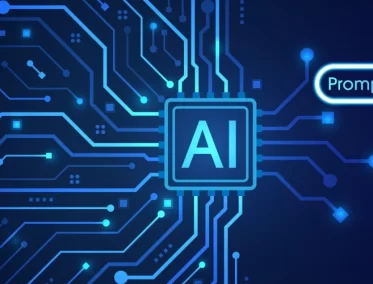Software development teams today are under immense pressure to release high-quality applications at an accelerated pace. However, traditional test automation often struggles to keep up with rapid application changes, leading to brittle test scripts, frequent test failures, and increased maintenance efforts. This is where Self-Healing Test Automation comes into play, enabling organizations to reduce test maintenance overhead, improve test reliability, and fast-track their releases without compromising quality.
The Challenge: Maintaining Test Stability in Dynamic Environments
Test automation is designed to ensure software reliability, but test scripts can become unreliable when applications undergo frequent updates. The main challenges faced by traditional test automation include:
- Frequent UI and Element Changes: Modern applications often undergo UI updates, causing automated tests to fail due to outdated locators (such as XPath, CSS selectors, or IDs).
- High Test Maintenance Costs: A large portion of testing time is spent fixing broken test scripts rather than running tests to validate functionality.
- Slow Test Execution: When automated tests fail due to minor application changes, teams spend unnecessary time debugging, slowing down the release cycle.
- Flaky Tests and False Positives: Instability in test execution leads to inconsistent results, making it difficult to differentiate between genuine defects and script failures.
To address these challenges, Self-Healing Test Automation introduces AI-driven intelligence to dynamically adapt to application changes and maintain test stability.
What is Self-Healing Test Automation?
Self-Healing Test Automation is an advanced approach where AI and machine learning (ML) algorithms detect, diagnose, and repair broken test scripts automatically. Unlike traditional test automation, which requires manual intervention for maintenance, this leverages AI to:
- Detect element changes in UI automation tests
- Identify alternative locators using AI-driven pattern recognition
- Update test scripts dynamically without human intervention
- Minimize test failures and reduce maintenance efforts
How Does it Work?
Self-healing mechanisms rely on AI and machine learning to analyze patterns and predict changes in applications. The core working principles include:
1. Multi-Locator Strategy
A self-healing test automation framework stores multiple locators (such as XPath, CSS selectors, or attributes) for each UI element. If the primary locator fails, the system automatically tries alternative locators to maintain test execution.
2. AI-Powered Object Recognition
AI-driven object recognition enables test scripts to identify UI elements even if their attributes change. This approach leverages machine learning models to recognize UI components based on patterns rather than static attributes.
3. Real-Time Analysis and Healing
Self-healing automation tools continuously monitor test execution. When a locator failure occurs, AI dynamically updates the test script by selecting the most reliable alternative locator and logs the change for future execution.
4. Auto-Update of Test Scripts
The self-healing mechanism ensures that test scripts remain up-to-date by automatically modifying element selectors. This reduces the need for manual test script maintenance.
Benefits of Self-Healing Test Automation
1. Reduced Test Maintenance Effort
By automatically updating test scripts, self-healing automation significantly reduces the time and effort spent fixing broken tests, allowing QA teams to focus on exploratory and strategic testing.
2. Improved Test Stability and Accuracy
With AI-driven healing mechanisms, automated tests experience fewer false positives, ensuring that test failures are genuine and not caused by application changes.
3. Accelerated Release Cycles
Self-healing automation minimizes disruptions in test execution, enabling organizations to release software faster without the risk of test failures delaying deployments.
4. Better Test Coverage
Since testers spend less time maintaining scripts, they can focus on increasing test coverage and incorporating more complex test scenarios into the automation suite.
5. Seamless Integration with CI/CD Pipelines
Self-healing test automation seamlessly integrates with continuous integration/continuous deployment (CI/CD) pipelines, ensuring stable test execution even in rapidly changing development environments.
Adoption in Agile and DevOps
Organizations adopting Agile and DevOps methodologies benefit the most from this Automation, as it aligns perfectly with the need for rapid, continuous testing. Here’s how:
- Faster Feedback Loops: Self-healing tests run reliably in fast-paced DevOps pipelines, reducing test execution delays.
- Scalability: AI-driven automation supports large-scale test environments by dynamically handling locator changes across multiple test cases.
- Proactive Defect Detection: Instead of waiting for test failures to be addressed manually, self-healing automation detects issues early, preventing defects from reaching production.
Tools and Technologies Supporting Self-Healing Test Automation
Several modern test automation tools now include self-healing capabilities. Some of the leading tools offering self-healing features include:
- Selenium with AI Enhancements (via plugins and extensions like Healenium)
- Testim.io (AI-driven UI testing automation)
- Mabl (self-healing test automation for continuous testing)
- Katalon Studio (built-in self-healing mechanism for UI tests)
Functionize (AI-powered autonomous testing platform)
Key Considerations for Implementation
- Selecting the Right Tool: Choose a tool that integrates well with your existing automation framework and CI/CD pipelines.
- Training AI Models: Self-healing algorithms improve over time; providing sufficient historical test execution data helps refine AI-driven object recognition.
- Monitoring and Validation: While self-healing automates script maintenance, periodic human validation ensures that test updates align with business logic.
- Handling False Positives: AI-driven healing may occasionally misinterpret UI changes, requiring a review process to validate test corrections.
As AI and machine learning continue to advance, Self-Healing Test Automation is poised to become even more sophisticated, integrating cutting-edge capabilities that redefine software testing. One of the most transformative developments will be AI-powered test script generation, enabling fully autonomous testing by dynamically creating, modifying, and executing test cases without human intervention. This will not only enhance efficiency but also significantly reduce the time spent on script maintenance.
Additionally, predictive analytics will play a crucial role in proactively identifying potential test failures before they occur. By analyzing historical data and patterns, AI-driven systems will anticipate anomalies, allowing teams to address issues before they impact production. This shift from reactive to predictive testing will lead to greater test stability and early defect detection, improving overall software quality.
Furthermore, self-healing automation will become more deeply integrated with DevOps pipelines, fostering more resilient and adaptive test environments. As continuous integration and continuous deployment (CI/CD) processes become increasingly reliant on automated testing, self-healing capabilities will ensure that test scripts remain robust despite frequent application changes. These intelligent systems will automatically adjust test cases in response to evolving UI elements, workflows, and business logic, minimizing disruptions in the development cycle.
With the growing adoption of AI in software testing, self-healing automation is set to become a standard feature across modern test frameworks. This evolution will not only streamline testing but also guarantee faster, more reliable software releases, empowering organizations to maintain agility while delivering high-quality applications.
For businesses aiming to achieve faster, high-quality software delivery, investing in this technology is a step towards a more resilient, efficient, and future-ready test automation strategy.



